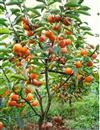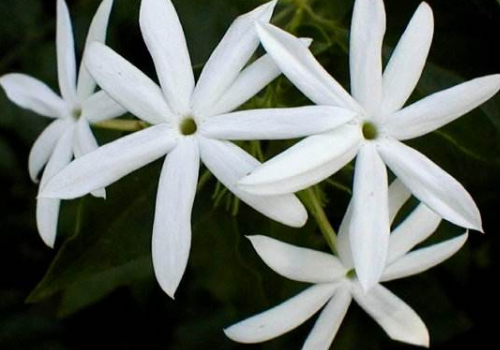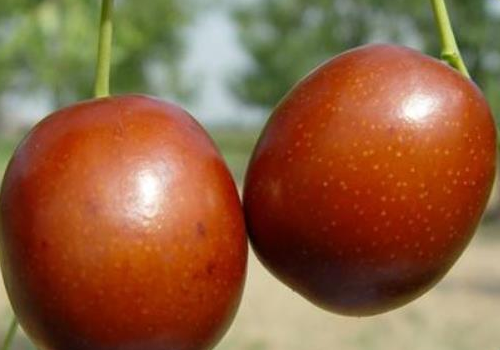thorn moth Learn more about thorn moth
-
Control of mango green thorn moth

1. Taxonomic status of mango green thorn moth, also known as brown edge green thorn moth [Parasaconsocia Walker], belongs to lepidoptera, thorn moth family. 2. Host and damage characteristics Host is extensive, damage mango, banana, citrus, peach, plum, plum, persimmon, chestnut, cherry, apple, pear
2020-11-08 species mango green thorn moth of control classification status -
Occurrence and control of main diseases and insect pests of sweet-scented osmanthus

Occurrence and control of main diseases and insect pests of sweet-scented osmanthus
2018-06-29 -
What is the harm of diamondback moth to cherry blossoms? How to prevent and cure?

What is the harm of diamondback moth to cherry blossoms? How to prevent and cure? The harm of diamondback moth is mainly caused by its larvae biting the leaves of cherry blossoms. The newly hatched larvae ate the residual epidermis of mesophyll in clusters, dispersed the damage when they grew up, and ate up the whole leaves in severe cases. There are many species of diamondback moths that harm cherry blossoms, such as brown-edged green moth, Chinese green moth, camphor moth, small black thorn, and so on. The adults of the diamondback moth are densely scaly, usually yellowish brown to green, with simple red or brown markings. Its larvae, commonly known as itchy spicy seeds, have prickles and poisonous hairs on the body, which can irritate people.
2019-01-16 -
Two methods to control persimmon diseases

The main diseases and insect pests easy to occur in persimmon trees are: persimmon corner spot, round spot, anthracnose, scab, leaf blight, powdery mildew, eucalyptus moth, paramecium, tea yellow moth, oval tooth claw Gill turtle, red wax scale, brown belt roll moth, small black thorn moth and so on. Prevention and treatment methods: ① to remove fallen leaves, burn, the beginning of the disease.
2018-09-13 -
Five ways to eliminate winter potted flower pests!

Although the Beginning of Winter has already arrived, in order to make the potted plants grow healthily, it is necessary to take necessary and effective measures to kill pests.
2018-10-18 -
Living habits, harmful characteristics and control methods of corn borer, a Lepidoptera pest

Corn borer belongs to Lepidoptera, Pyralidae. Distributed in Europe, North America and Northwest Africa, the dominant species in China is Ostrinia furnacalis. European corn borer is mainly distributed in Inner Mongolia, Ningxia and Hebei. These provinces are mixed areas of European corn borer and Asian corn borer, Changji.
2020-11-09 Lepidoptera order pest corn borer life habit harm -
What are the main pests of sweet-scented osmanthus?

What are the main pests of sweet-scented osmanthus? How to control sweet-scented osmanthus pests? We also ask experienced netizens to help introduce the common pests of sweet-scented osmanthus, such as gibbous insects, shell insects, thorn moths and coir moths. The planting net has sorted out the harm and control methods of the above pests to sweet-scented osmanthus trees.
2018-07-17 -
What insect pests should be prevented when planting sweet-scented osmanthus trees?

What insect pests should be prevented when planting sweet-scented osmanthus trees? What are the ways to prevent and control these pests? We also ask experienced netizens to help introduce the common pests in sweet-scented osmanthus tree planting, such as gibberellin, shell insect, thorn moth and coir moth; the planting network collates the harm and control methods of the above pests, which are listed below for netizens' reference. Ji.
2018-07-17 -
Is it better for prickly ash trees to have thorns or no thorns? How to cultivate it?

Zanthoxylum bungeanum trees are planted in many parts of our country, usually hanging fruit in August and September, pepper can be put in food to increase hemp flavor, but also has a certain medicinal value. There are many varieties of Zanthoxylum bungeanum. Is it better to have thorns or no thorns? What?
2020-11-08 Pepper tree yes with thorns or no thorns good how cultivation -
A few tricks to help flowers and plants stay away from insect pests

Many people like to raise some flowers and plants indoors, which not only greens the environment but also edifies interest. But flowers and plants are not only a little delicate, but also easily favored by some bugs, annoying and helpless. Let me introduce to you some common pests of flowers and plants and their control methods. Chrysanthemum is easy to attract aphids
2018-08-26 -
Control techniques of Diseases and insect pests in Cornus officinalis

Control techniques of Diseases and insect pests in Cornus officinalis
2018-07-05 -
Ganoderma lucidum

Ganoderma lucidum grain moth scientific name Hapsiterabarbata Christoph, is a lepidoptera, grain moth family. Also known as borers, larvae eat porous fungi. In recent years, it has been found in Jiangsu area that it is harmful to the culture medium and mushroom body of Ganoderma lucidum, Armillaria mellea rod, Ganoderma lucidum and Pleurotus ostreatus. The damage characteristics are on the covered Ganoderma lucidum. The grain moth burrows into the Ganoderma lucidum body, feeds on the contents of the Ganoderma lucidum, and discharges the feces from the surface of the Ganoderma lucidum body. When it occurs seriously, it can eat the Ganoderma lucidum body. Shape characteristics Adult body length 5-
2019-01-15 -
The latest course of planting techniques and methods of the top ten credits

The ten herbs, also known as rat thorn, cat thorn leaf, yellow bamboo, etc., are shrubs belonging to the ten genera of Berberidae, which can be used as potted plants, often used for garden cultivation and medicinal use. it has the effects of heat-clearing and detoxification, detumescence and antidiarrheal, mainly for diarrhea, dysentery and jaundice.
2020-11-10 The latest top ten meritorious service planting technology methods tutorials -
Do you take medicine for cherries?

Cherry has always been a kind of fruit that people like. It has full grains, sweet taste, high nutritional value and large market demand. Many people don't know about cherry planting. Do you want to know cherry medicine? First, cherry medicine? cherry diseases and insect pests only need
2020-11-08 Cherry medicine Mo cherry has always been people like -
How to identify Helicoverpa armigera and Helicoverpa armigera of Noctuidae? How to prevent and cure it?

Helicoverpa armigera and Helicoverpa armigera are two very similar insects, which are difficult to distinguish in production. They both belong to the family Lepidoptera, also known as Helicoverpa armigera and Spodoptera litura, widely distributed. So how to identify Helicoverpa armigera and Helicoverpa armigera? How to prevent and cure it? Cotton bolls in life
2020-11-09 How to identify Noctuidae Helicoverpa armigera tobacco green insect how to -
The latest course of planting techniques and methods of seabuckthorn

Hippophae rhamnoides, also known as vinegar willow, yellow acid thorn, acid thorn willow, etc., are deciduous shrubs of the family Elaeagnaceae, with high cultivation value, drought tolerance, wind and sand resistance, can survive in saline-alkalized soil, and are widely used in soil and water conservation. Seabuckthorn is widely planted in northwest China for sand.
2020-11-10 The latest Hippophae rhamnoides planting techniques methods tutorials seabuckthorn alias -
How to control insect pests for bonsai flowers

Although bonsai is prepared in advance, but diseases and insect pests will still harm bonsai flowers, so it is also very important to control diseases and insect pests for bonsai flowers. However, how can we safely do a good job of pest control for bonsai flowers?
2018-07-02 -
The solution of how to raise common insect pests in Maojasmine

Hairy jasmine is a kind of flower that is very similar to jasmine. How to raise it? Solutions to common insect pests: how to raise hairy jasmine: 1, planting: potted hairy jasmine, every 2-3 years, should turn the pot in March or after flowering. Potted soil can be prepared with 2 parts of garden soil, 1 part of compost and 1 part of sand.
2019-01-20 -
What's the name of the bug on the jujube tree? can it be grafted?

Jujube tree, which is known to many people, is known to many people, so what is the name of the bug on this jujube tree? Can it be grafted: what is the name of the worm on the jujube tree? the worm on the jujube tree is called the larva of diamondback moth. The diamondback moth is a general name for insects of the family Lepidoptera, which has about 500 species. Global distribution, mostly in the tropics
2019-01-21 -
What pesticide does the caterpillar use?

Prickly caterpillars are mostly found in green leaves and eat leaves for a living. There are many common species, such as flat, prismatic, etc., mostly diamondback moth larvae. It has grown a large number of shrubs and Toona sinensis plants such as Amorpha in summer and autumn in the north. What kind of pesticides are used to control caterpillars?
2020-11-08 Thorns caterpillars use what pesticides thorns most common green
